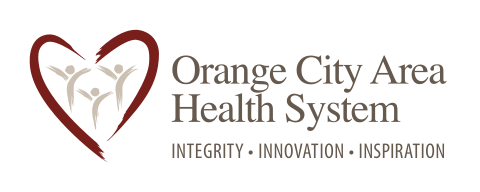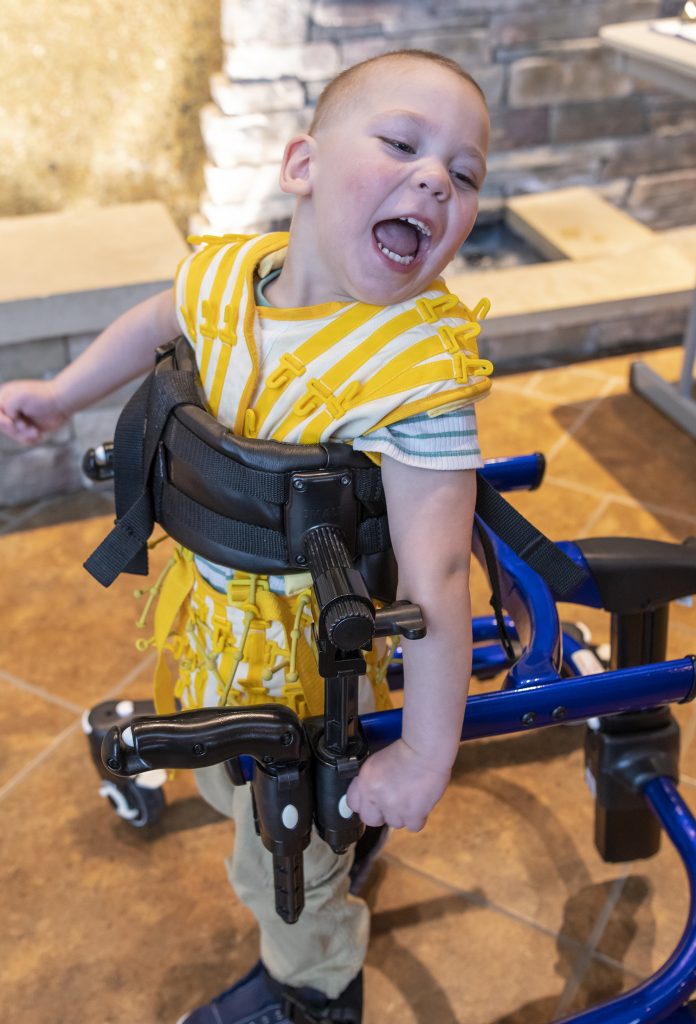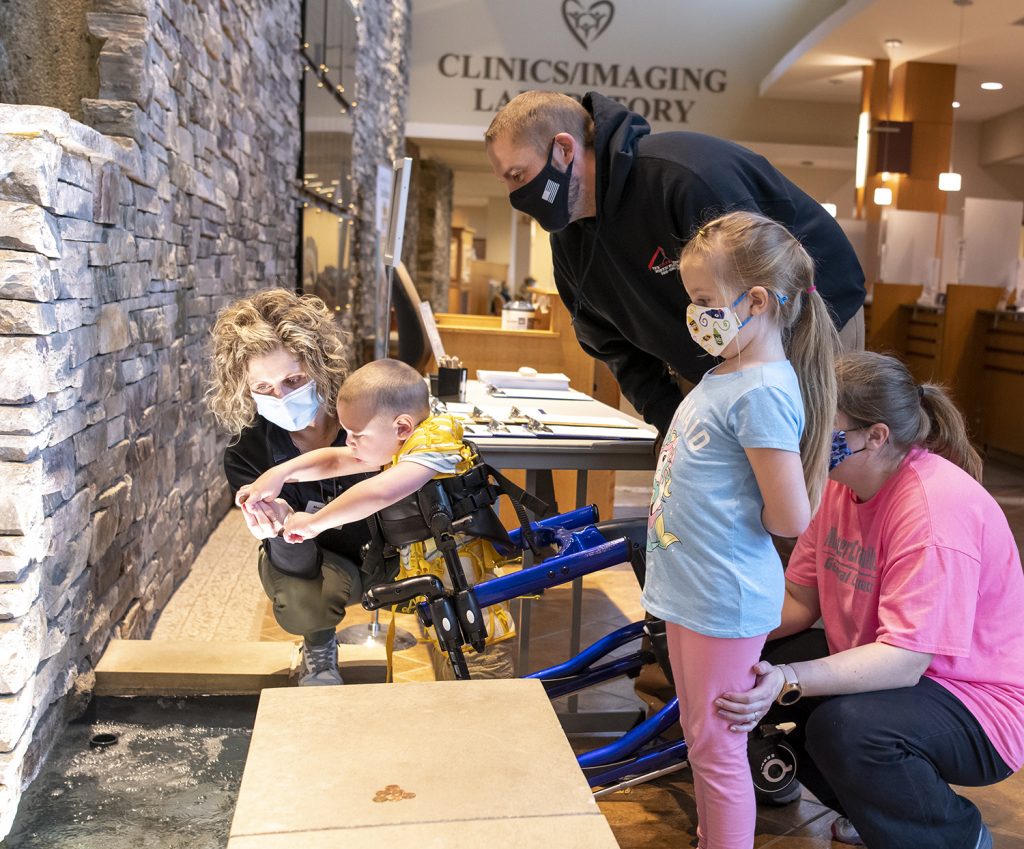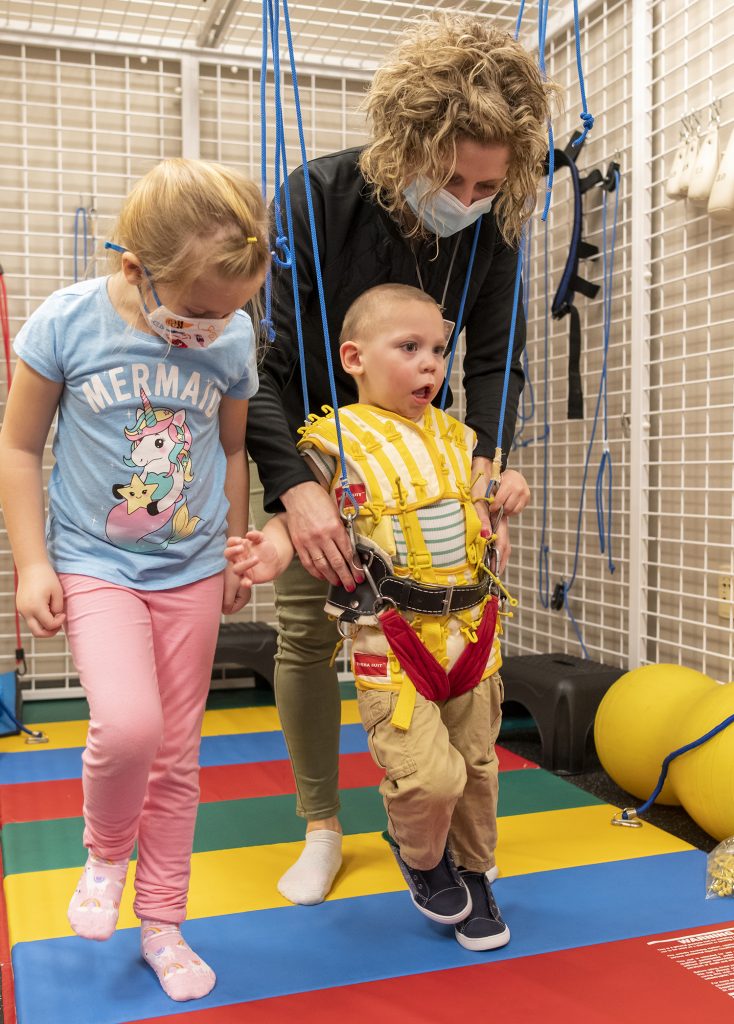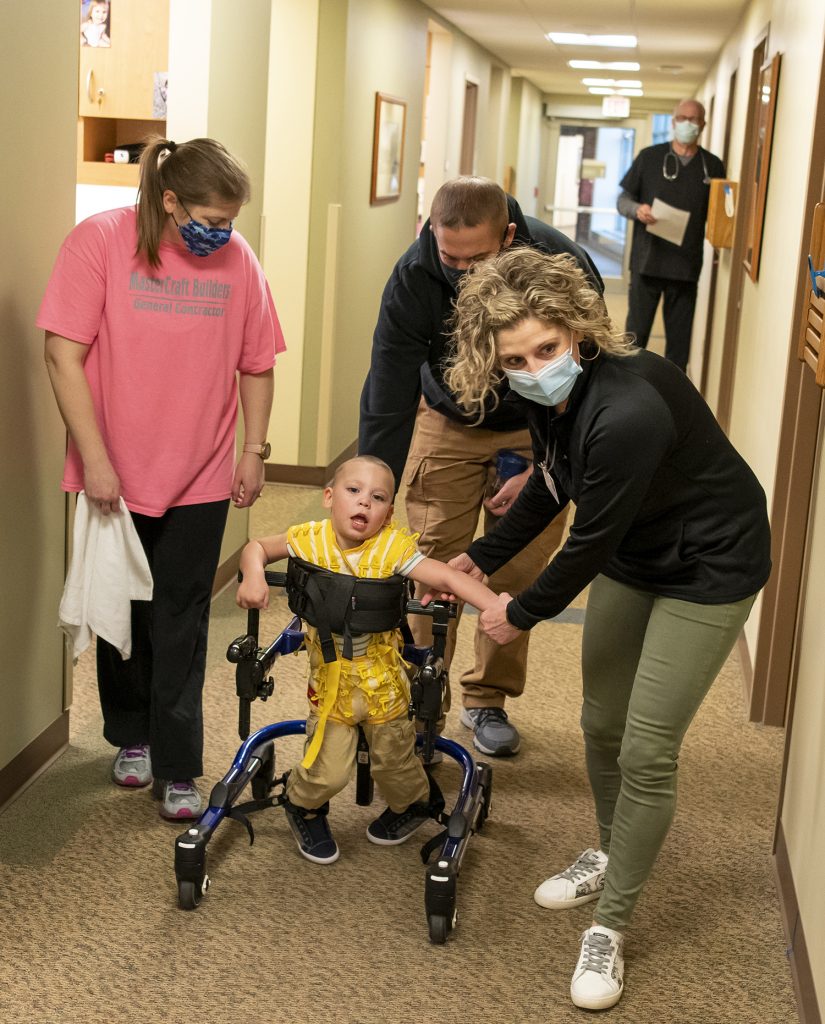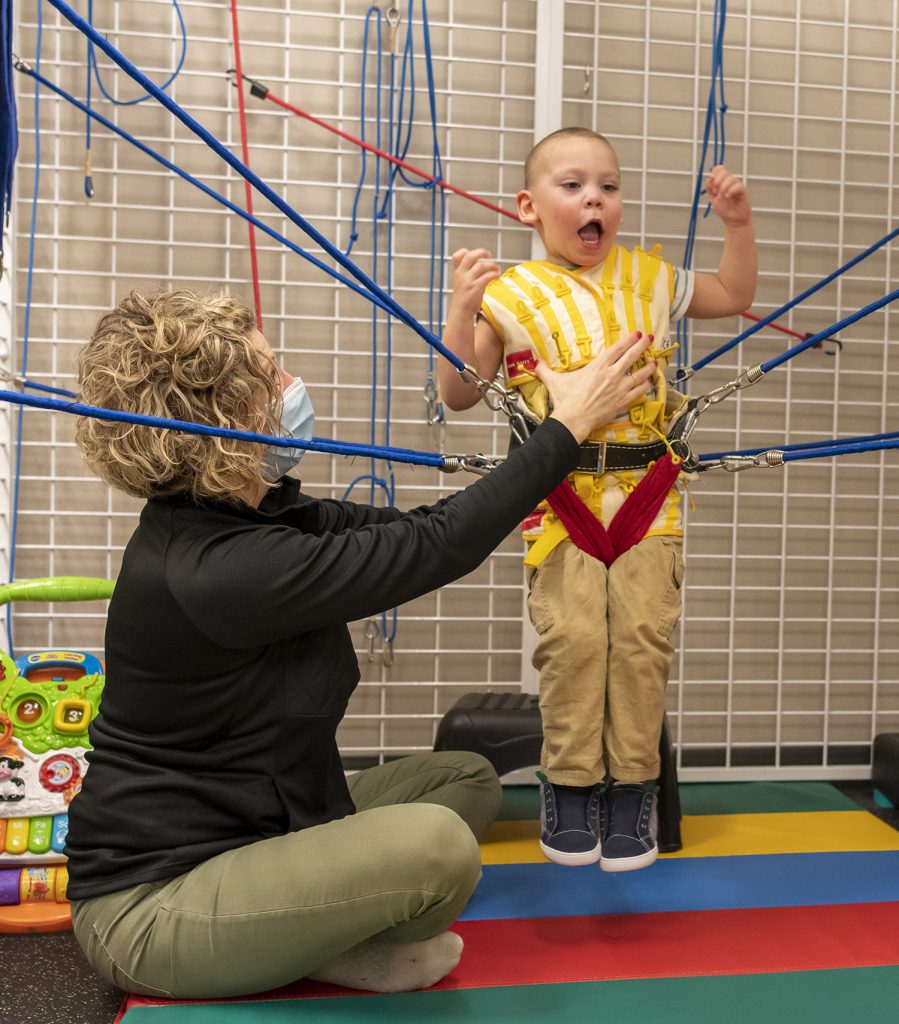The benefits of intensive pediatric physical therapy
-by Monica Aalbers, PT
Certain experiences in life often direct one’s path. This was the case for me during one of my clinical rotations. As a physical therapy student, I was fortunate to be assigned a pediatric clinical rotation in Decorah, Iowa; it is here where I had my first exposure to intensive pediatric physical therapy. After seeing such amazing life changing results, I knew in my heart that if I were to continue to pursue pediatric physical therapy that I would want to be certified in this method of treatment.
To better understand the purpose of intensive pediatric therapy, it is important to appreciate the difference between traditional and intensive pediatric therapy. Traditional pediatric physical therapy is 1-4x per month for 30 to 45 minutes, depending on the child’s specific needs. There is definite benefit from this type of therapy; it serves an important purpose for many children. In contrast, intensive pediatric physical therapy consists of daily therapy for 3+ hours per day for 2-3 consecutive weeks. This is then enhanced with a home program and weekly therapy if possible. The intensive program is often repeated at 6 -12 month intervals as allowed by insurance, personal finance, and schedules.
So why intensive therapy? Some may think it is too strenuous for a young child to undergo that much therapy. However, the families who have selected this approach often find that their child can make more progress in 3 weeks of intensive than 6 months of traditional therapy. Intensive therapy works because it provides the appropriate volume of repetition to gain new skills. If you have ever watched a baby learn a new skill (self-feeding, sitting, standing, walking, etc), you quickly learn that it takes the child hundreds of repetitions to learn a new skill. This still applies to us as adults; if we want to learn a new skill such as golf, we don’t just step on the course and excel, but rather it takes hundreds of repetitions to become a skilled golfer. This is assuming the individual has a normal nervous system. Most children with special abilities have nervous systems that do not communicate as efficiently and effectively as a normal nervous system. Therefore, they require additional volume of repetition to master a new skill. The 10-15 hours of therapy per week allow more time for more repetition.
Intensive physical therapy often includes more than just high volume of training; it includes special equipment. The “spider cage” uses a harness and bungees to help support the child so the therapist can use his/her hands to help create proper movement patterns. The spider cage also provides opportunities for children to gain strength by isolating individual muscles in specific positions using weights and pulleys. The cage also has an attached railing on the ceiling that allows children to have partial support while learning to crawl or take steps. The Therasuit is a “dynamic orthotic” – which is a custom suit with hooks. Based on the child’s needs, the therapist will attach bungees to provide support and/or resistance. The Therasuit can also assist with alignment and correct positioning. After applying the suit, the therapist will take the child through movements like sitting, squatting, lunging, walking, etc as the bungees can serve as resistance to those movements, which ultimately builds strength for those skills. On an interesting side note, the Therasuit was patented by a European therapist who has a daughter with cerebral palsy. The idea was inspired from a concept from aerospace engineers who designed a compression suit for astronauts to wear in space to avoid loss of bone density. The pressure from the suit would load the astronauts bones similar to what gravity would do on earth.
Many children can benefit from intensive physical therapy. I have worked with children age 2-18 using this method. Common reasons for using intensive therapy include but are not limited to the following: post-stroke, post traumatic brain injury, cerebral palsy, spina bifida, neurological disorders, genetic conditions, down syndrome, and sensory processing disorder.
“It was a true joy to work with Mr. Bentley and his family. I was honored to provide care for him in a location closer to home. He tolerated the therapy so well and showed significant progress. I was inspired by how hard he worked but also by how well his family encouraged him. It was truly a team effort. They held him to a high standard. They continue to cling to unwavering hope in his potential and maintain a “never give up” mindset.”
Monica Aalbers, PT
“If you ever want to meet a super hero, stop by our pediatric therapy rooms at Orange City Area Health System on any given day. You will meet some of the most inspirational kids and their families. Their dedication, determination, and resilience is unmatched. These, my friends, are unsung heroes who inspire me every day to be a better person.”
Monica Aalbers, PT
Bentley’s story
-by his mother Tonya Hinrichs
Bentley has a rare, genetic brain disorder called pachygyria, which causes his extremities to have increased muscle tone (hypertonia) and his core to have decreased muscle tone (hypotonia). Bentley will be three on April 5th and still has yet to master sitting independently for extended periods of time.
We previously went to a therapy center in Los Angeles, Califormia, for an intensive therapy session. We were hoping to find a similar therapy closer to home. We were blessed to finally stumble upon TheraSuit on our wild goose chase. TheraSuit provided us the contact information for possible therapy centers, which included Orange City Area Health System as an option to train Chris and myself so we could purchase a TheraSuit for home use. We were thrilled to find suit therapy so close to home since we saw the amazing benefits NeuroSuit provided Bentley while we were in California.
Libby, OT, assisted Bentley in overcoming his fear of straws and we were successful at him drinking out of the straw during our second week of therapy! This is a huge accomplishment for him.
We strongly believe Bentley is right-handed due to his accuracy when utilizing it versus his left. Unfortunately, Bentley – prior to intensive therapy – utilized his right hand for stability while using his left to play. Ashley, OT, encouraged Bentley to use his left hand for stability to free his right hand to be used during play. Ashley also assisted Bentley on improving his grasp and release of both hands. He gained the ability to open his hands and grasp objects during our last intensive in California but still struggled with releasing objects. Bentley has improved releasing objects from his right hand and using it more during play. We hope he will eventually gain the ability to self-feed.
Monica, PT, focused on Bentley gaining strength during his intensive session. Bentley greatly improved walking in his gait trainer while wearing his AFOs with Monica’s encouragement and expertise. Bentley was able to sit independently for 76 seconds during his TheraSuit therapy with Monica! This is the longest he has ever sat independently!
During an OT session with Ashley, Bentley moved from tall kneeling into a lunge and then standing with little support at his hips. This was amazing to see him be able to instruct his body and transition fairly quickly without being cued to complete!
We received amazing support from everyone at the hospital and the community. Living out of our fifth wheel toy hauler brings its own set of unexpected challenges. It was great to be a part of such a small, supportive community that offers such an amazing intensive suit therapy that will allow Bentley to become the most successful he can be in life. Bentley will be the only person to set his limitations in life!
